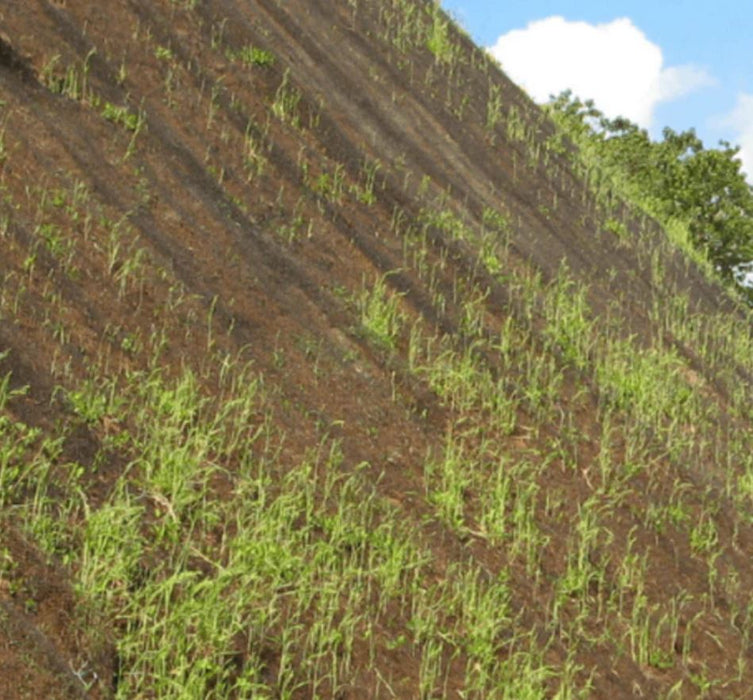Erosion Control Providers: Shielding the Setting
Wiki Article
Best Practices for Erosion Control in Building Projects
Are you working on a building and construction task and concerned regarding disintegration control? Look no more! In this short article, we will assist you through the most effective methods for preventing disintegration on your site. You'll discover 5 crucial strategies, reliable debris and drainage administration methods, essential factors to consider for slope stablizing, and tips for shielding greenery and dirt. We'll likewise look into the significance of carrying out proper water drainage systems. Prepare yourself to take on erosion head-on and make certain the success of your building project.5 Necessary Disintegration Control Techniques

To successfully regulate disintegration on your building site, you'll need to execute vital methods such as incline stabilization and debris control steps. Slope stabilization is essential in protecting against soil erosion on high inclines. One more efficient technique is the usage of erosion control coverings or mats, which are placed on the slope and assistance preserve soil fragments while enabling plants to grow.
Reliable Debris and Drainage Administration

You can successfully manage sediment and overflow in your construction job by executing appropriate erosion control actions. Debris and overflow monitoring is critical to stop disintegration and protect the surrounding environment. One efficient step is the setup of silt fencings along the boundary of the building and construction website. These fencings help to contain sediment and stop it from going into neighboring water bodies. Another crucial method is the execution of erosion control blankets or mats. These blankets offer a safety layer on bare dirt, decreasing the effect of rains and avoiding erosion. In addition, using debris containers or sediment catches can help to capture debris and prevent it from getting in stormwater systems. Normal upkeep of these procedures is necessary to ensure their effectiveness throughout the building and construction task. This consists of checking and cleaning up sediment basins and routinely replacing silt fencings and erosion control coverings as required. By applying these disintegration control procedures, you can efficiently handle debris and drainage in your building and construction project, reducing the influence on the atmosphere and adhering to regulatory demands.
Trick Factors To Consider for Incline Stablizing
When thinking about slope stablizing, it is essential to assess the surface and determine potential areas of instability. You require to very carefully take a look at the incline's characteristics, such as its angle, drainage, and make-up patterns. Try to find signs of erosion, such as exposed origins, cracks, or slumping dirt. These indicators can provide you an idea of where stabilization measures might be needed.An additional choice is to plant vegetation on the slope, as the roots can help secure the soil and control erosion. Additionally, mounting disintegration control coverings or mats can provide prompt security while plant life ends up being well-known.
It's vital to routinely keep an eye on the stabilized slopes to guarantee their effectiveness. Watch out for any type of indications of movement or erosion, and take instant activity if necessary. Normal maintenance, such page as checking and fixing any damaged steps, is likewise vital to guarantee long-lasting security.
Best Practices for Plant Life and Soil Security
One efficient way to shield plants and soil on inclines is by on a regular basis checking for indications of erosion and taking prompt activity if needed. Begin by evaluating the slope for any type of signs of erosion, such as subjected origins, bare soil patches, or debris accumulation at the bottom. Implement disintegration control steps such as mounting erosion control blankets, mulching, or also constructing retaining walls if required.Executing Correct Drainage Solutions
When it comes to taking care of water flow and avoiding erosion, comprehending these elements is crucial. Steeper inclines can lead to faster water flow, enhancing the danger of erosion and flooding. On the other hand, gentler slopes allow water to flow more gradually, decreasing disintegration potential.Sandy dirts have a tendency to drain pipes faster due to their rugged appearance, while clay soils have a slower water drainage rate due to their portable nature. Furthermore, taking into consideration the soil characteristics assists avoid waterlogging, which can lead to bad plant growth and damages to frameworks.
Final Thought
Finally, when it involves erosion control in construction tasks, you should adhere to these finest techniques. Implement effective sediment and drainage monitoring methods to stop pollution. Think about incline stablizing methods to guarantee the security of the website. Safeguard plants and dirt by utilizing suitable actions. Develop appropriate water drainage systems to manage water flow (Memphis Erosion Control Solutions trenching). By adhering to these important practices, you can efficiently manage erosion and guarantee the success of your building job.To effectively control erosion on your building website, you'll need to execute important techniques such as incline stablizing and sediment control measures. Incline stabilization is crucial in protecting against dirt erosion on high slopes. Another reliable method is the usage of disintegration control blankets or floor coverings, which are put on visit the site the slope and assistance keep dirt bits while allowing plants to grow. An additional option is to grow greenery on the slope, as the origins can aid secure the soil and control erosion. Implement additional resources disintegration control steps such as mounting erosion control coverings, mulching, or even creating keeping wall surfaces if needed.
Report this wiki page